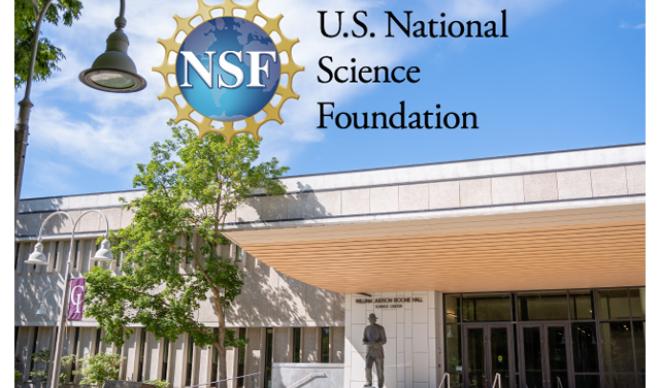
When Dr. Katie Devine first connected with Charles Kerton and Grace Wolf-Chase seven years ago, it was on a failed bid to earn a grant from the National Science Foundation (NSF). But rather than the story ending there, it was just beginning.
The trio, representing The College of Idaho, Iowa State University, and the Planetary Science Institute, have spent the past seven years collaborating on research that ultimately led to being rewarded last fall with an NSF grant worth more than $400,000 to continue their work.
“We’re not Caltech and we’re not Cal-Berkeley and we’re not the University of Washington, but we’re doing good research,” Devine said of the astronomy research being done at the College. “The success rate for these grants is about 25 percent in astronomy. There’s not a lot of small, undergraduate research institutions that are getting these grants.”
Devine, a physics professor at the College, and her students have been examining yellowballs, star-forming regions within the Milky Way galaxy. The work earned a grant from NASA in 2021 and the investigations between the three institutions continue to grow. A paper published that same year included the names of several student researchers from the College and Devine credits the work done by many students over the past several years as vital to the NSF’s eventual approval.
“Going from an idea to having proof-of-concept and showing this actually works - our approaches work and are publishable - definitely helps in the eyes of the NSF,” she explained. “Showing tentative results that can be expanded really shows that the science that the NSF is paying for is going to be successful.”
Now that the group has proven its model works and has secured the grant, what comes next? Boiled down to its simplest explanation, Devine says they’ll just keep going.
“We’re going to take the 6,000 candidate yellowballs that were discovered by citizen scientists as part of the Milky Way Project,” she said. “We’re going to take the pilot-region size of about 400 of them (that the group has already researched) and apply those methods to the full yellowball catalog.”
Once complete, the catalog will be available to researchers everywhere. Then they will use the catalog to do further scientific data analysis. One of the topics that intrigues Devine is identifying differences between low-mass star formations (like our sun) and high-mass star formations, which are much larger.
This grant will provide funding to the research over the next two summers which will include students from the College.
“The students get to connect with these broader communities of astronomers and I think that makes it real,” Devine said. “They’re not just doing this thing with this professor that is comfortable. They’re part of a broader community. It’s research that’s getting out into the world. It’s not just a hobby on the side.”
The NSF grant is jointly funded by the Astronomy and Astrophysics Grants program and the Established Program to Stimulate Competitive Research (EPSCoR). To learn more, click here.
The College of Idaho has a 133-year-old legacy of excellence. The College is known for its outstanding academic programs, winning athletics tradition, and history of producing successful graduates, including eight Rhodes Scholars, three governors, and countless business leaders and innovators. Its distinctive PEAK Curriculum challenges students to attain competency in the four knowledge peaks of humanities, natural sciences, social sciences, and a professional field—empowering them to earn a major and three minors in four years. The College’s close-knit, residential campus is located in Caldwell, where its proximity both to Boise and to the world-class outdoor activities of southwest Idaho’s mountains and rivers offers unique opportunities for learning beyond the classroom. For more information, visit www.collegeofidaho.edu.